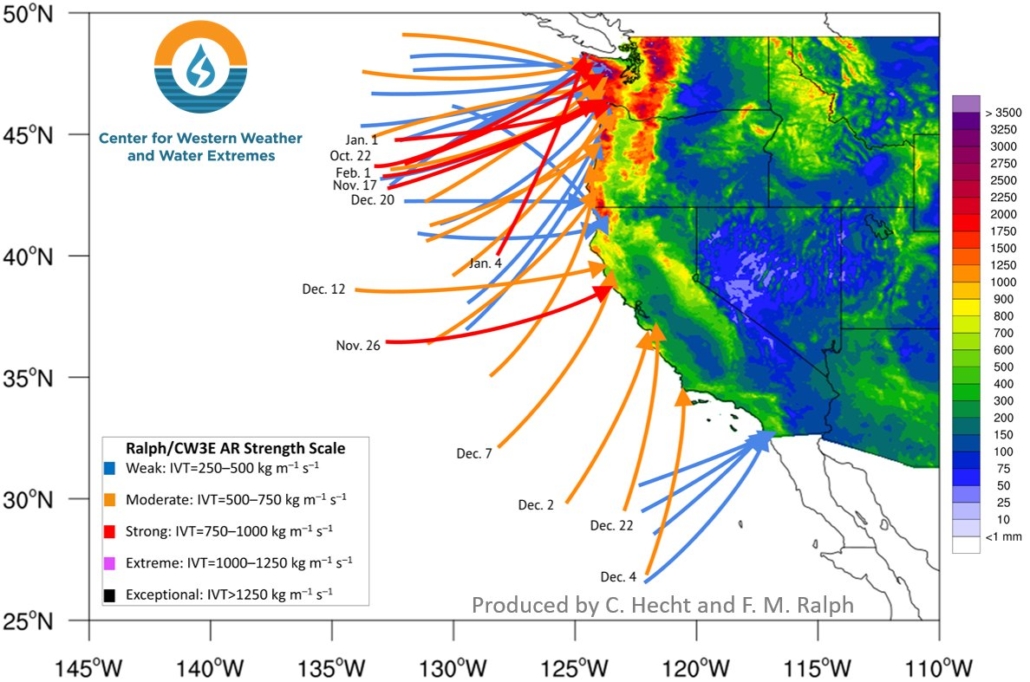Atmospheric River Storm Observations Take Flight Over Pacific Ocean
Research on atmospheric rivers takes flight as UC San Diego’s Center for Western Weather and Water Extremes taps “Hurricane Hunter” aircraft for specialized scientific missions.
The aircraft will fly for a 13-week period (that began January 5) to glean critical data for improving forecasts of atmospheric river storms over the Pacific Ocean. Those storms, or “AR’s,” provide up to half of the U.S. West Coast’s annual precipitation and a majority of the flooding.



